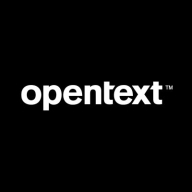

Jira and OpenText Software Delivery Management are prominent in the project management and software delivery space. Despite similar functionalities, Jira seems to have an advantage due to its comprehensive feature set, customization flexibility, and reasonable pricing, making it more appealing to smaller teams.
Features: Jira is known for its customized workflows, sprint planning, and extensive integration capabilities. Users appreciate the flexibility in adapting workflows to team processes. OpenText Software Delivery Management highlights its integration with quality management and DevOps, focusing on end-to-end traceability, which is particularly attractive to industries with stringent compliance needs. It offers robust traceability across various processes, essential in regulated sectors.
Room for Improvement: Jira users highlight challenges with search and filtering, plugin management, and user interface, indicating the need for smoother integration and more streamlined administrative functions. OpenText Software Delivery Management users want enhancements in dashboarding and reporting, better integration with external tools, and greater flexibility in managing complex workflows.
Ease of Deployment and Customer Service: Jira offers flexible deployment options across public cloud, private cloud, and on-premises, catering to diverse user needs. However, customer support feedback is mixed regarding response times and satisfaction. OpenText Software Delivery Management often prefers on-premises deployment, aligning with enterprise environments requiring stringent security. Its customer service involves relying on distributors and partners for support, showcasing a different engagement approach.
Pricing and ROI: Jira's pricing is considered competitive and reasonable for smaller teams, with its feature-rich platform often justifying the cost despite the cumulative expenses of plugins. OpenText Software Delivery Management is viewed as expensive compared to alternatives, partly due to its extensive features and enterprise focus. Nonetheless, both products deliver significant ROI, enhancing productivity and efficiency according to users.
The ability to generate audit evidence with a single click saves ten days of work for ten people, enabling them to focus on other tasks.
I did not face any issues with stability or upgrades.
We can expand the number of servers and resources as required.
To improve Jira, maybe some AI features could be added.
While it aims to be as flexible as possible for a large enterprise application, sometimes there are limitations that may not meet specific organizational needs.
OpenText ALM Octane is an expensive product.
Its ability to generate audit evidence with a single click is a significant advantage, as it saves considerable time and money compared to manual processes.
| Product | Market Share (%) |
|---|---|
| Jira | 17.7% |
| OpenText Software Delivery Management | 5.1% |
| Other | 77.2% |


| Company Size | Count |
|---|---|
| Small Business | 102 |
| Midsize Enterprise | 57 |
| Large Enterprise | 149 |
| Company Size | Count |
|---|---|
| Small Business | 7 |
| Midsize Enterprise | 2 |
| Large Enterprise | 32 |
Jira is a powerful cloud- and subscription-based application lifecycle and issue management solution. It is designed to aid users both in project management and in resolving any issues that arise at any point in the software development process. It is especially concerned with easing the ability of developers to collaborate.
Jira Benefits
Some of the ways that organizations can benefit by choosing to deploy Jira include:
Jira Features
Real-time notification feature. Users can set Jira so that it offers them notifications that contain critical information in real time. It can send users email notifications when pressing issues have been updated. They can also set it to notify them about tasks that may be due, or other similar events.
Reviews from Real Users
Jira is a powerful solution that stands out when compared to many of its competitors. Two major advantages it offers are its workflow engine and its highly customizable dashboard.
Bharath R., the tool implementation and project management lead at a financial services firm, writes, “I feel the strongest feature of Jira is its workflow engine. It empowers us to automate our workflows within our organization. It's the one characteristic of Jira which I think can help any organization, be it in any domain.”
Uday J., a staff engineer at a computer company, says, “Another thing that I like a lot about Jira is that in the dashboard, you can plug the modules that you want. You can enable certain sections. For example, you can show trend history, open Jira tickets, etc. Some of the managers have created a dashboard for each engineer.”
OpenText Software Delivery Management provides application lifecycle management with Agile and Waterfall support. It features intuitive interfaces, CI/CD integration, automated testing, and robust reporting, improving project management efficiency and usability.
Designed to enhance teams' productivity and streamline processes, OpenText Software Delivery Management integrates seamlessly with Agile methodologies. Its comprehensive backlog and requirements management, user stories, and test management make it a complete tool for managing the development lifecycle. The platform aligns with DevOps, providing traceability and extensive customization options. Traceability from requirements to deployments is enhanced, making it easier for teams to track progress. It offers integration with popular tools like Jenkins and JIRA, ensuring a unified approach to continuous delivery and testing management.
What key features does OpenText Software Delivery Management include?OpenText Software Delivery Management is implemented across technology-focused industries, supporting Agile processes like requirements management and defect tracking. Organizations use it to standardize development workflows and optimize continuous delivery integration, choosing it for its ability to support both Agile and Waterfall methodologies within application lifecycle management.
We monitor all Application Lifecycle Management (ALM) Suites reviews to prevent fraudulent reviews and keep review quality high. We do not post reviews by company employees or direct competitors. We validate each review for authenticity via cross-reference with LinkedIn, and personal follow-up with the reviewer when necessary.